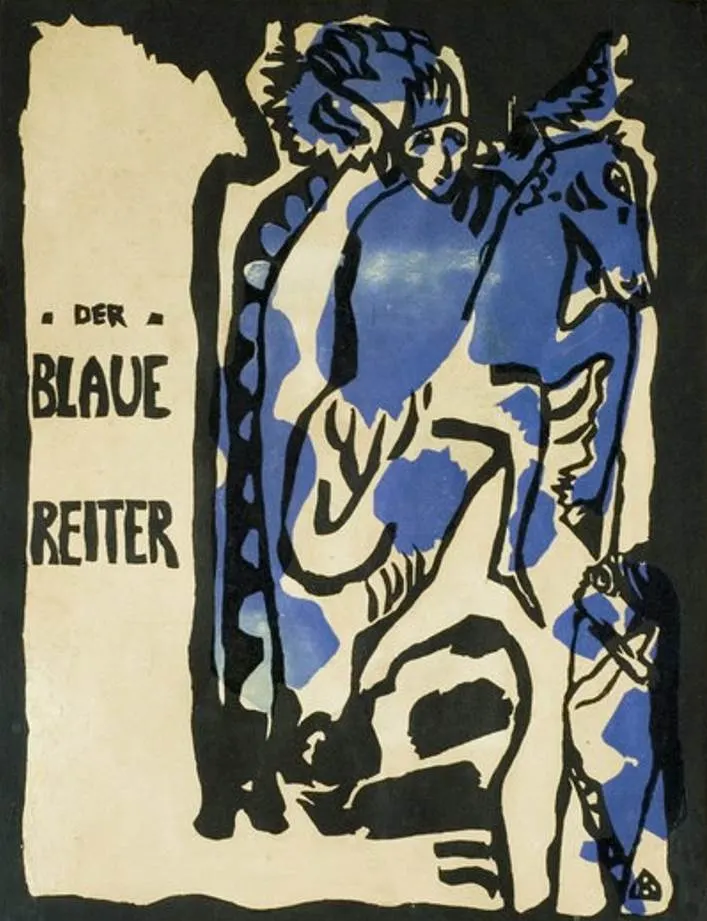You can’t admire this painting in a famous museum, but it’s hard to deny its significance in art history.
It was completed by a famous Russian artist who co-founded a significant almanac several years later. Unfortunately, the group was dispersed with the outbreak of World War I.
Let’s take a closer look at some of the most interesting facts about The Blue Rider by Wassily Kandinsky, one of the most influential Expressionist paintings ever produced.
1. It was completed at an important time for art in the early 20th century
The Blue Rider is a pretty small but very significant painting with blue elements by Wassily Kandinsky, a man who only accidentally became an artist.
The Russian artist originally pursued a career in law and economics and easily earned his degree in these fields at the University of Moscow.
He was so successful in his professional career that he was offered to become a professor at the University of Dorpat in modern-day Estonia.
This all changed when he was able to see a work by Claude Monet titled “Haystacks,” one of the prime examples of Impressionist paintings.
He started painting himself at the age of 30 and eventually moved to Munich to pursue a career as an artist in 1896. He completed this remarkable painting in 1903.

2. It depicts a rider on a horse wearing a blue cloak
Influenced by the Impressionists, the painting depicts a rider on a horse that is galloping through a meadow of green grass.

It’s not the most impressive painting by Kandinsky, but the artist was still experimenting with his painting technique.
He used thick brushstrokes which makes the details in this work very blurry. The blue shadow and elements are the dominating factor in this painting.

3. The artist was still studying art in Munich when he painted this work
Kandinsky moved to Munich in 1896 and initially studied art in the capital city of Bavaria, one of the most important artistic centers at the time.
He first enrolled at the private school of Slovenian artist Anton Ažbe (1862-1905) but later moved to the Academy of Fine Arts, one of the most prestigious art academies in Germany.
This was a period in which he was still trying to find his artistic direction. He experimented with Impressionism, Realism, and even Pointillism for several years at the turn of the 20th century.

4. It served as the inspiration for the artistic group co-founded by Kandinsky
This particular painting is considered to be a turning point in Kandinsky’s career as his works developed from Impressionism to abstract art.
He traveled through Europe between 1906 and 1908 and met many like-minded artists. Especially the Cubists and Fauvists in France had a deep impact on his style.
When he met German artist Franz Marc (1880-1916), both men decided to form a group called “Der Blaue Riter” or “The Blue Rider,” the same name as the title of Kandinsky’s important painting.
Franz Marc’s paintings often included animals and vivid colors, something exemplified by his iconic Blue Horse I (1911), a painting that was featured in the first edition of their exhibition.

5. The blue color had a deeper meaning for the artists in the group
The main reason why Kandinsky and march chose to refer to their group as Der Blaue Reiter is that the color blue had a deeper meaning.
They were the leading figures of what we know today as the German Expressionists, a branch of the Expressionist movement of the late 19th and early 20th centuries.
Kandinsky was also an art theorist and wrote a treatise in “Der Blaue Reiter Almanach” titled “On the Spiritual in Art.” It explained how the use of colors can convey a spiritual message in art.

6. The painting is seen as a precursor to Kandinsky’s later abstract works
The rider on the horse consists of smushes of paint and it’s impossible to identify him. The horse is depicted as running in a completely unnatural manner and this was done on purpose.
The unnatural blue shadows complement the overall hazy view in this work and highlight the deeper spiritual meaning.
This laid the foundation for the abstract artworks that Wassily Kandinsky produced during the years before the outbreak of World War I.
He eventually became the main pioneer of abstract art. His theoretical writings are arguably his main contribution and they defined what he had started with The Blue Rider in 1903.

7. How big is The Blue Rider by Wassily Kandinsky?
The size of this painting isn’t what makes it significant, the transition between Impressionism and Abstract Art certainly is.
The Blue Rider by Wassily Kandinsky is a small oil on canvas painting that has dimensions of 55 × 60 centimeters (22 × 24 inches).
8. Where is the painting located today?
I mentioned that you cant admire this painting in a museum because it’s part of a private collection in the Swiss city of Zurich.
If you want to admire artworks by Kandinsky then The Guggenheim in New York City and the Lenbachhaus in the Kunstarealm of Munich are some of the best museums to visit.
